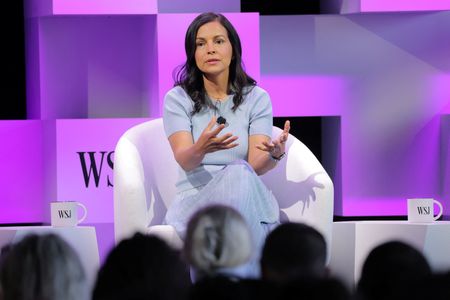(This Feb. 18 story has been corrected to fix the spelling of ‘transpire,’ in paragraph 8, and ‘picker,’ in paragraph 4)
By Kritika Lamba
(Reuters) – Bumble forecast its first-quarter revenue below analysts’ estimate on Tuesday, signaling that the dating app operator’s efforts to boost growth are taking longer than expected, sending its shares down 16% in extended trading.
Online dating apps have been grappling with declining user engagement and customer spending on their platforms amid a lack of new features and pressures from still-high inflation.
Bumble, however, is increasingly investing in marketing initiatives and generative AI-driven features to attract more young users.
The company will include features such as ID-verification and AI-photo picker in its upcoming winter release, as it aims to increase safety for its users, CEO Lidiane Jones said on the post-earnings call.
Bumble said it expects to see a temporary decline in paying users by 100,000 to 120,000 in the near term, as it is in the early stages of this process.
As part of its monetization strategy, the company also said it would discontinue its smaller dating platforms, Fruitz and Official.
Bumble is finding it difficult to maintain the multi-app strategy — unlike Match, which is benefiting from its portfolio — and is further struggling to manage in a matured dating market, said Jamie Lumley, fundamental analyst at Carbon Arc.
“One area Bumble has talked about that is yet to transpire as a revenue opportunity is (the) friends and community feature, but that is yet to materialize,” he added. “But could potentially change the game for Bumble.”
Bumble’s total average revenue per paying user decreased to $20.58, compared with $22.64 a year ago.
Total paying users for the Bumble app were at 2.8 million, down by 57,000 from the third quarter.
Earlier this month, the company’s bigger rival Match Group, which offers dating app services such as Tinder, Hinge and OkCupid, also forecast its first-quarter revenue below estimates.
Bumble expects its first-quarter revenue to be between $242 million and $248 million, below analysts’ average estimate of $256.9 million, according to data compiled by LSEG.
The Austin, Texas-based company’s fourth-quarter revenue fell 4.4% to $261.6 million.
(Reporting by Kritika Lamba in Bengaluru; Editing by Shilpi Majumdar and Alan Barona)











